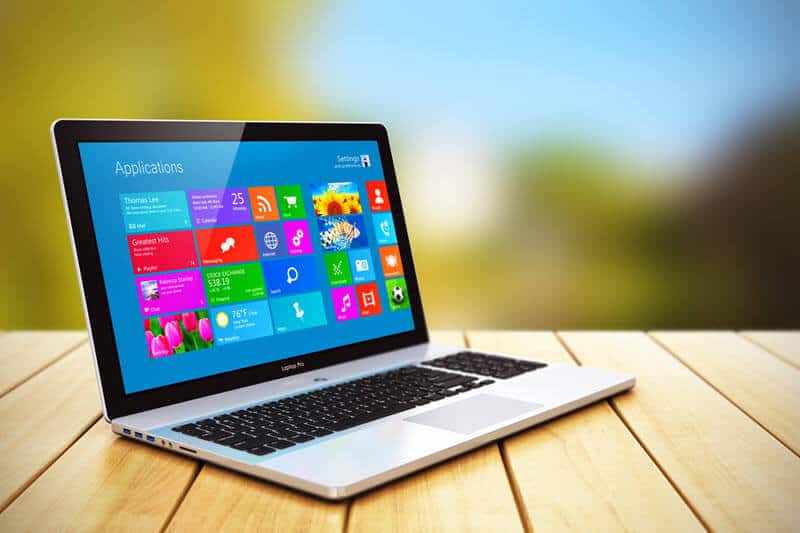Disclaimer: This post may contain affiliate links, meaning we get a small commission if you make a purchase through our links, at no cost to you. For more information, please visit our Disclaimer Page.
Are you trying to set your PC to full screen but the taskbar won’t hide? It can be annoying. This is a common issue, especially with Windows 10.
You may think that the problem lies within the operating system. However, it’s more likely to be a malfunction or incompatibility issue, rather than a Windows update.
Sometimes closing certain applications fixes the issue, and the taskbar might disappear.
But what if that doesn’t work and you can’t keep the taskbar off the screen?
A taskbar on your screen can be a terrible interruption, especially if you are watching a movie or doing other things.
But you shouldn’t be worried when the taskbar won’t hide in full screen.
There are several ways to fix it, should one way fail. While the fixes suggested are meant for Windows 10, they can also work with other Windows versions.
A taskbar is a vital toolbar that allows you to perform various tasks. You can switch between starting new applications and opening new windows. It is an icon bar that you can move and hide. It is used to launch applications.
But when it starts misbehaving, it becomes a bother.
Related Reading: What to Do When the Taskbar Won’t Hide
Table of Contents
What could be the possible causes of a taskbar that won’t hide on full screen?
When your taskbar interrupts normal activities while using your PC, it could be because:
- You are using more than one display monitor. If you are on full-screen mode and switch between displays, the taskbar can appear on the screen you turned away from.
- Browser updates. Some browser updates can cause your taskbar to appear when you switch between an app window and a full-screen video.
What should you do when the taskbar won’t hide in full screen?
There are various solutions to this problem, depending on the cause. Here are recommendations on how to fix the issue.
Solution 1: Check the auto-hide feature
Before doing anything else, go to settings and check if the auto-hide feature is on or not. You could try turning it on or off and see if the problem disappears. Here are the steps to follow:
- Open the settings by right-clicking your mouse then click on ”personalize”.
- Look for the taskbar somewhere down. The taskbar options will show up on your screen
- If the auto-hide feature is off, turn it on. If it is already on, turn it off, then on after a few minutes.
This solves the problem for most people, rechecking hides the taskbar in full-screen mode.
Solution 2: Restart the Windows Explorer service
Restarting Explorer can help you solve a bug anytime. Here is how it works.
- Go on your start menu and right-click it
- Select the task manager on the list outlined. Alternatively, you can open the task manager by pressing Ctrl + Alt + Delete.
- You will see the processes tab. Under it, look for Windows Explorer service then right-click on restart this service. Through this place, you can also choose to End Task.
- As for now, restart Windows to solve the issue. Upon doing this, you won’t have any program running on the taskbar.
This time, the toolbar should not appear on your full-screen.
Another alternative way of restarting your PC is using the command line prompt. Besides, you can create a script that you can use in the future.
- Start with using the keyboard short cut windows +R
- A run box will appear. Type cmd on it.
- You can then type Taskkill/im explorer.exe/f
- The next step is to type Explorer
- Finally, type exit and your PC will restart
Solution 3: Background Apps
Apps can tamper with your Windows taskbar. Some of these apps are third-party customization tools and themes.
The following steps will help you deal with Apps.
- Go to the settings bar and click on apps
- Select start-up and find apps starting with Windows 10.
- Turn off all programs related to third party Windows customization tools. This removes the taskbar from your screen.
Solution 4: Edit the Local Group Policy
Microsoft added a group policy which has made it possible to control notifications.
You can either set or remove them. The local group policy is a complicated method, but it’s easy to carry out the task with guidance to solve the issue.
Note that if you want to get notifications, you will need to go back and enable the settings again. The steps below should help you do it.
- Go on your Windows vital and click it. Type gpedit.msc
- Click on what appears first and open it
- Click on the user configuration and choose start menu and taskbar
- Click on Lock all taskbar settings. This will lock everything on the toolbar, but you can reset anytime you want to disable it
- Turn off all the balloon notifications.
- Go and click the user configuration folder then click the start menu and taskbar. This should lead you to turn off all balloon notifications.
- Repeat the same step as mentioned above. Click on the user configuration, start menu, and finally the taskbar.
- Put off the automatic promotion of the notification icons.
- Go after the user configuration and click on the start menu and taskbar. You will see notifications & turn off calls at quiet hours
- Go to the user configuration and click on the start menu and taskbar.
- Go to notifications & turn off toast notifications
That might be a bit detailed, but it will completely stop errors with your taskbar.
Interruptions from a taskbar that won’t hide in full screen can be annoying. While it is
possible to fix them, prepare to reset your computer if you think you might have corrupted files.
You can check whether any apps are running in the background. If so, turn them off.


